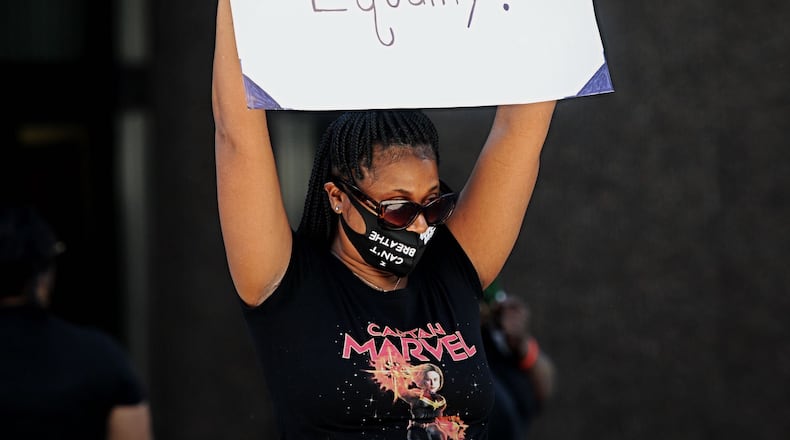It is a matter of justice that not only impacts the lives of those oppressed through one system or another, but those on all rungs of the ladder.
The Dayton Daily News has partnered with a group that includes Dayton Mayor Nan Whaley, University of Dayton, DATV, Miami Valley Regional Planning Commission, Learn to Earn Dayton, the Dayton Metro Library and Premier Health on “The Roots of Racism” a three-part series that premiered Wednesday on our Facebook page.
The first part covers the 1700s through the 1800s and can be replayed on our Facebook page and our website.
The next event explores the community’s racial history in the early 1900s and will premiere at 6 p.m. Wednesday, Oct. 21.
The final presentation, mid-to-late 1900s, will debut at 6 p.m. Wednesday, Oct. 28.
Each includes voices from community elders impacted by racism.
Racial disparities and the notion of systematic racism were thrust into the limelight around the nation last summer following the death of George Floyd under the knee of a police officer in Minneapolis
We agreed to join the “Roots of Racism” project because racism hinders and shortens lives here – in our community.
Consider this:
― Black babies die at a rate four times higher than white babies, according to the 2019 community health assessment by Public Health Dayton-Montgomery County.
― Blacks are often raised in neighborhoods that lack access to the same opportunities as white residents. More than 65 percent of Black children in our metropolitan area are being raised in very low opportunity neighborhoods that lack resources that would give them the same opportunities to succeed as white children, according to a recent study by Brandeis University says.
Those resources include educational opportunities, parks and playgrounds, access to healthy food, health care and safe housing.
― Data shows that the Dayton region fares poorer than most other large metropolitan areas when it comes to racial segregation as well as the difference between what blacks earn and what whites earn.
When the Brookings Institute compared the Dayton area to the rest of the 91 large U.S. metros with a Black population of at least 3 percent, we were declared the 23rd most segregated.
― Add to that the fact that studies have found that Blacks face a widening income gap compared to white residents and frequently die younger. Whites on average earn more, and between 2008 and 2018, the gap in annual median income between blacks and whites grew by $4,309.
Black Ohioans represent 14 percent of the state’s population, but make up 17 percent of the positive COVID-19 cases, 27 percent of hospitalizations and 17 percent of deaths, Ohio Department of Health statistics.
This is an improvement from August when Gov. Mike DeWine declared racism a public health crisis and said Blacks made up 25 percent of the positive cases, 32 percent of hospitalizations and 19 percent of COVID-19 deaths.
In 2019, the Dayton area made its feelings about racism clear when a group affiliated with the KKK came to town.
In the wake of Floyd’s death, organizations like the Dayton Area Chamber of Commerce have taken on the issue.
In a statement signed by this newspaper and nearly 100 companies, the chamber stated support for efforts to declare racism a public health crisis approved by a laundry list of jurisdictions that include Dayton, Montgomery County, Yellow Springs, Trotwood and Piqua.
Public Health–Dayton & Montgomery County passed a resolution in June declaring racism a public health crisis.
Earlier this month, Miami Valley Regional Planning Commission, an organization that makes transportation planning, funding and policy decisions for Greene, Miami and Montgomery counties and part of Warren County, approved a resolution that calls for ensuring equity, diversity and inclusion in the organization.
Resolutions and letters of support are only part of the solution.
We are committed to staying engaged on matters of racial equality.
We will call out progress and point to problems that must be addressed so that this community can move forward.
We encourage you to be open-minded and take part in activities that foster understanding and empathy.
These are not easy challenges to overcome, but we believe they can be conquered.
About the Author


